IPA Clone Series: Pliny The Elder
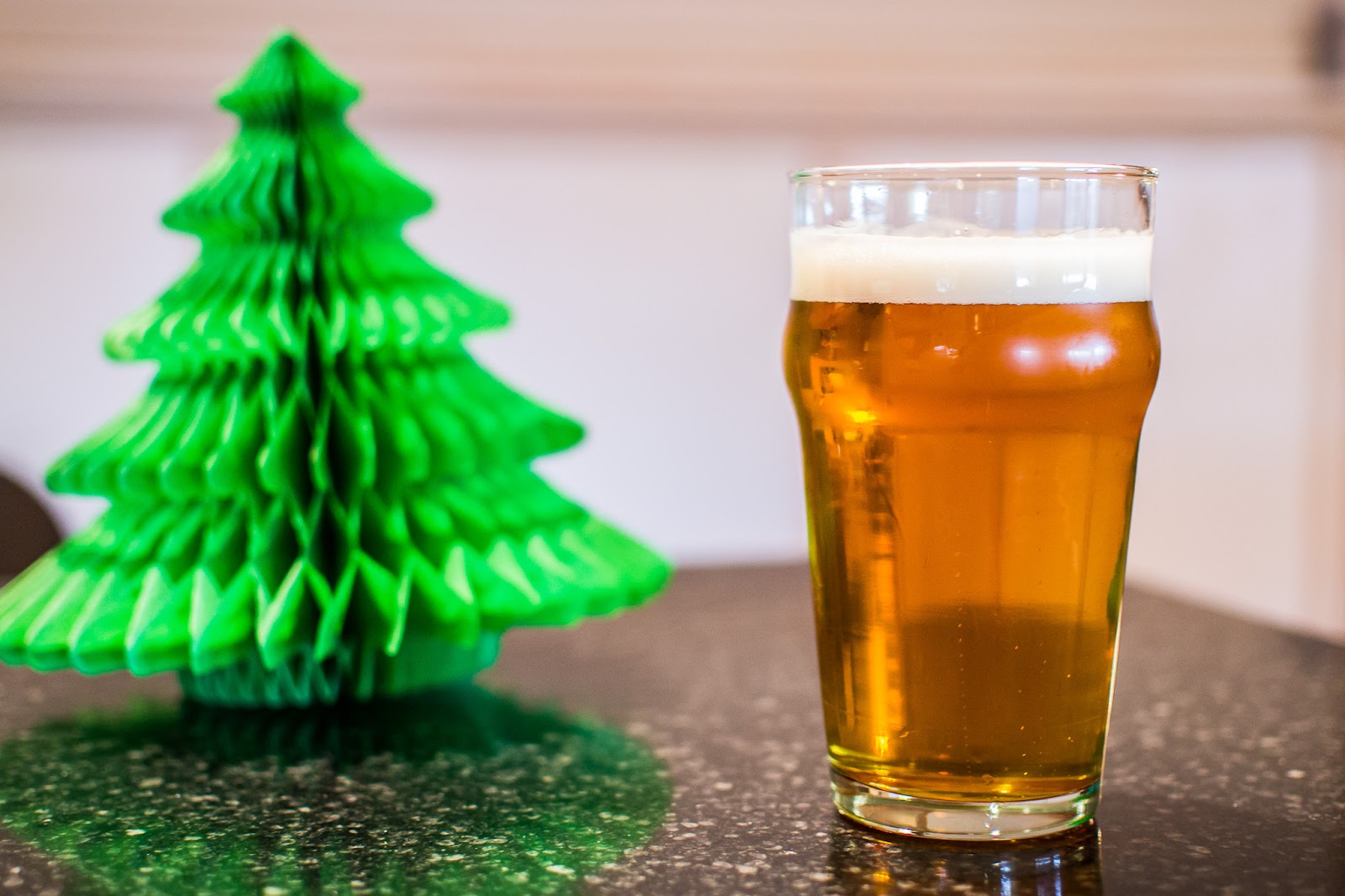
This beer is an interesting one. Why create a clone recipe for a beer that has possibly the most widely distributed clone recipe on the Internet? Well, from what I know, I don’t believe that clone recipe is exact. It’s really close, but we can make it perfect.
The first issue with that clone recipe is color. Every time I have Pliny, I’m always surprised by how light in color the beer actually is; it’s blonde. The popular clone recipe uses 3.5-4% C40, and I feel that’s too much, considering the color and flavor of Pliny. I’m thinking around 2%. Secondly, Vinnie has said over and over that Pliny uses hop extract for both the 90min and 45min additions. Thankfully, I’ve already done my homework on hop extract when I brewed the Younger, so that should be easy. The final change to the recipe is that Vinnie mentions that he is using a little Amarillo in the dry hop now.
So I used my typical method to piece together a 6 gallon batch: build the recipe at their size, then scale it down. Russian River’s brewpub is a 10BBL brew house with 20BBL fermenters, but their production brewery is a 50BBL brew house with 100BBL fermenters. Brewers buy pellet hops in 11 or 44lb bags, and grain that isn’t base malt comes in 50 or 55lb(25kg) sacks depending if it’s domestic, or imported. So I built the recipe around numbers that would make sense for the professional brewer, in the same way that homebrewers like to work with pounds of grain and ounces of hops. I know Pliny was around 1lb/bbl of dry hops back in 2005-ish. I know that Vinnie is using a little more dry hops now, and they also top the recipe off with a little Amarillo. I could easily see it being close to 1.5lbs/bbl at this point.
What I ended up with is ridiculously close to the recipe that’s floating around the interwebs. The differences being less C40, hop extract for bittering, and some Amarillo in the dry hop. I’m keeping the hops in grams because they work out to odd numbers in ounces.
My friend Kiernan is a huge PTE fan, and he’s throwing a house-warming party in mid-December. It would only make sense to double the recipe, so that I could bring a keg of PTE to serve at the party. Keep in mind the recipe below is for a 12 gallon batch.
The nearly 28lbs of grain for this recipe was certainly the most I’ve ever crammed in my mash tun. The brew day was stress free though. 60min mash @ 150* followed by a slow sparge and a 90 minute boil. Just like brewing the Younger clone, the mass of hop extract tends to stick everything afterwards (kettle, stirring stick, thermometer, etc). We chilled to 65*, pitched 1.5 packs rehydrated of US05 per fermenter, and set the fermentation fridge at 16.7C.
Brewed:11-03-12
Dry Hopped:11-18-12
Kegged: 11-30-12
OG: 1.072
FG: 1.009
ABV: 8.3%
IBU: don’t care (actual is probably 90-95)
12 Gallons
26lbs 2-row
18oz Carapils
10oz C40
1.5lbs Dextrose
Mash @ 150
50ml Hop Extract @ 90
10ml Hop Extract @ 45
62g Simcoe @ 30
62g Centennial @ 0
154g Simcoe @ 0
Dry Hop 1
62g CTZ
62g Simcoe
62g Centennial
18g Amarillo
Dry Hop 2
18g each: CTZ, Simcoe, Centennial, Amarillo
California Ale Yeast – Plan for 500 billion cells
This fermented slow, as US05 tends to do when I ferment it cool in big beers. It took around 10-11 days to hit terminal gravity, but it attenuated perfectly. I cold crashed both fermenters, racked them to secondary, and began dry hopping after two weeks. Seven days later I added the second dose of dry hops, which sat for five more days before I kegged both fermenters. About 24 hours later, I fined them with gelatin, and let them slowly carbonate.
I want to write a few quick notes before I get to how it tastes. First, this beer puts a smile on my face =). Secondly, I can’t explain why some of my beers drop dead clear in like 4-5 days, and others take 4-5 weeks. My recent Double Jack clone is finally becoming brilliantly clear after 4 weeks in the keg, where as this Pliny clone is brilliant after 4 days. Same process, same equipment, very similar recipes. Anyway….
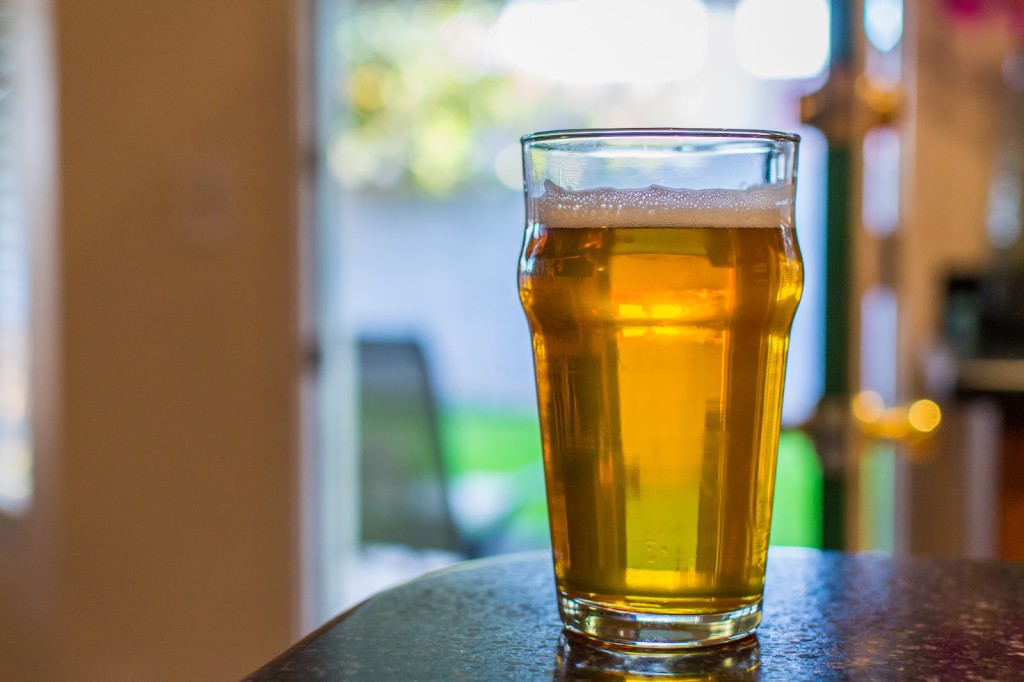 Results: Almost Cloned (98% there)
Results: Almost Cloned (98% there)
Kristen’s parents can hopefully bring a bottle of Pliny out from Cali when they drive here for Christmas, so I’ll be able to do a side-by-side taste test then. Still, I can say this is just about as close as I can remember it.
I’ll spare everyone the lengthy taste test, as many, many home brewers have tasted Pliny. Color and clarity are perfect, but I’ll post an updated photo once I have the beers side-by-side. Aroma is that amazing mix of citrus and heavy pine that Pliny is known for. Mine is a little dank, but not quite as dank as Pliny typically is (thoughts on that below). The flavor is perfect, and my clone has that same punchy-bitterness as Pliny. The mouthfeel is dead on, dry, but oily and resinous.
I remember Pliny being ever-so-slightly more dank than my example. This could be my memory, but I’ll know for sure in a couple weeks (and an update will follow.) I’ve got two theories on the dankness. Either RR used better quality CTZ than I did for dry hopping, or they dry hop with a higher percentage of CTZ. I’m leaning towards the former, as CTZ is such a commodity crop, and it’s oil profile can really vary.
So the take away from this is three-fold. First, the popular Pliny recipe is nearly dead on. Change it by using hop extract, cut the C40 to 2%, and toss a tiny pinch of Amarillo in the dry hop. Secondly, make absolutely certain to dry hop with the best Columbus you can find. Simcoe is a very assertive hop, but CTZ is a fucking sledgehammer. It also varies in quality immensely, so make sure it passes the rub test before you dry hop with it. You’re looking for a big resinous, slightly citrusy, and dank (read: pot-like) aroma. Thirdly, the only thing better than having Double Jack on tap is Double Jack and Pliny on tap at the same time (I know I’m boasting here.)
**UPDATE** After trying elder again fresh on tap, I’m updating this post to say that it’s almost cloned. This recipe is like 98% there. The grain bill is perfect, but the dry hops need more CTZ and a little less Centennial. Look for a re-brew in mid-2013
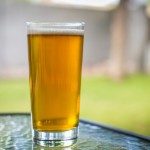
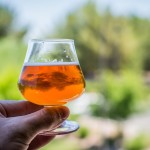
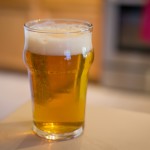
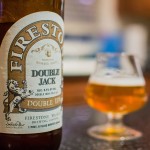
I enjoy reading your blog and you might have posted this elsewhere… What are you doing as far as water chemistry goes to hit your mash pH and flavor profile?
Thanks. It's R/O water. The water here in Phoenix is pretty poor for brewing, so it's nice to start with a good baseline. For a beer like this I'll add 1.5tsp calcium chloride and 1.5tsp gypsum per 5gal of brewing water.
I agree with your assessment that the color on the common clone is too dark. instead of less 40 though, I was thinking of changing it to C-15L instead, keeping the amount the same. might try your clone in Jan – what IBUs for the extract (since I'll still use pellets or leaf instead).
Right in line with the clone. I like AAU's as a measurement much more than IBU because IBUs will vary based on the formula used. AAUs never vary (Ounces of hops x AA% of the hop).
Plan for 48AAU at 90 minutes and 10AAU at 45min. You can totally use another hop than CTZ for bittering. Warrior, Bravo, Apollo, etc all make good substitutes. Just divide 48 by the AA%, and you'll get the ounces to use. (e.g. if AA% is 18%, use 2.66oz at 90 and .55oz at 45)
I'm pretty positive RR uses C40 for Pliny. I'll compare color in a week though.
Cool – good to know. Nice to find another Xfit/Brewer around – brewing since '05, Xfit since '07 – cheers!
I think I may have one for your clone series. Mission Brewery Shipwrecked. It is the the Imperial IPA That got me to start liking the style more than IPA's. I used your ruination 10th as a jumping point for my partial mash receipe that I am about to brew. I would be curious what you could do with a Shipwrecked. If you can't find it there in AZ let me know and I can send some from SoCal.
It's been a few years since I last had it, but I remember it being a really good West coast DIPA. They do distribute here in AZ, so I'll have to get my hands on a fresh bottle, and see what I can do.
Very cool! I didn't think there were too many crossfitting homebrewers out there. Homebrew is totally Paleo, haha
Oh, and one tip for a Ruination 10th partial mash. Don't be afraid to add some simple sugar to help get that beer to attenuate. I'd definitely add like 1lb of table or corn sugar. Lack of attenuation is where mine missed the mark.
haha – I'll have to send you a pic of my brewery (Kal clone) – you can see my rings, rack, pullup bar behind it – I've even done a WOD during the mash before.
LOL, that's pretty awesome.
I noticed that in you write up so I went ahead and wrote it up with a lb of belgian Candi syrup simplicity. I've used it a few times and really seems to help my attenuation. Thanks for confirming my thought though!
Perfect timing, I'm about to brew a pliny clone for the 2nd time. My first one, like yours, was a bit too dark. Mine finished at 1.008 and was a bit drier in the finish then the PTE we tried alongside it. Interesting about the amarillo, I think I'll add some into the dry hop as well.
I also found that it dropped clear after about a week in the keg – where an APA I made right after took an extra week (and that was made with WLP002). I wonder if the corn sugar somehow helps – that's the major recipe difference between that and most other beers I make…
Thanks for the post – interested to see a post on how it compares to the commercial version.
I saw your post for the first time you brewed the Elder. Looked like it turned out well. I'd definitely recommend dropping the crystal down to 2%, but that brings up an interesting point with the body of the beer. You might need to up the carapils to account for your brew system/processes. The clarity I just can't explain. I've been really trying to nail it down over the past few months and I can't.
I've had recipes with no sugar and American yeast drop clear in no time, and I've had beers with simple grain bills and English yeast take awhile to drop clear. I'm going to start taking some better notes in terms of which fermenter and keg was used. Maybe I'll draw some conclusion.
I actually had an issue with my thermometer and mashed a few degrees lower then intended. I liked it dry though so I'm also going to mash at about 150F this time instead of the 151-152 that the recipe has.
I dropped the crystal to 3% and made up the 1% with 2 Row. I'm not too worried about cloning this exactly this time around as I'm going to enter this in a few competitions so I didn't want to make it too light. I'm going to use 21g Amarillo in the 1st dry hop and 7g in the 2nd dry hop (would like to use an even oz as I have them packaged that way).
In regards to the clarity – did you dry hop this in a secondary or in the primary? I racked onto the first dose in a secondary and added the 2nd dose in there as well. I then cold crashed for 3 days before kegging. I don't typically secondary even to dry hop so that would likely explain my experience in the clarity difference between this and other IPA/APAs.
Sounds very tasty. That should definitely do well in competitions. Anything over-the-top, but still drinkable does great in the IIPA category. You know, I didn't think about where I dry op having a difference. I followed Russian River's schedule, so I cold crashed the primary to drop as much yeast as possible, then dry hopped after racking to secondary.
For the Adouble Jack clone, I followed FW's procedure, and added the first round of dry hops to the primary when it was within 1* Plato from terminal gravity. Then I racked to secondary and continued to dry hop.
I wonder if the yeast/hop interaction has something to do with it. I might run with that idea and see where it takes me.
if you're interested, here's an illustrative post I put together:
http://www.homebrewersassociation.org/forum/index.php?topic=14134.0
That's a very slick setup. I like the hop spider. Is that one of the ones from Stainless Brewing?
I think that makes sense – the yeast/hop interaction coupled with racking to a secondary probably is enough to make the difference in clarity between that and dry hopping directly in primary once fermentation is complete with no secondary.
What I did last time I brewed this (and plan to this time) is rack to secondary when I'm within about 1* Plato onto the first dose of dry hops (with no cold crash), wait about 8 days and add the 2nd dose. On day 10 from the first dose of dry hops I cold crashed for 3 days before kegging. After a week in the keg it was very clear, but was still getting some hop particles in the glass. A week later it poured brilliantly clear with no hop particles.
Going to brew this tonight!
Yup – Zack does a good job
Turns out, he lives like 3 miles from me. I'm definitely going to buy my future stainless goodies from him.
What is your water profile? I know Scott says he uses RO and adds some gypsum and cacl which works well in a low SRM beer like Pliny but not so well for a darker amber.
Martin brungard's sheet is a must have if you're really wanting to dial in proper pH an flavor via brewing salts.
Just my $.02
What did you use for your hop extract? A lot of HopShot, or did you get some IsoHop? Just curious… I'm looking into ordering some online.
It's CO2 Extracted Hop extract, you definitely don't want to use IsoHop, as you don't want to be adding isomerized alphas. For this beer, I used Hop shots, but a couple weeks after I brewed it, I found a vendor that sells cans of CO2 extracted hop extract (same stuff).
I did a blog post about a week before this one with some pictures of it. Check out Yakima Valley Hops, they are the vendor I bought it from.
Thanks, good info. I'm about to order some from Yakima Valley.
@Paul – I use RO also and have been using Tasty McDole's water profile for hoppy beers which is Ca-110ppm, Mg-118ppm, Na-17ppm, SO4-350ppm, Cl-50ppm.
Scott, do you also add gelatin to your hoppy beers like Pliny Elder/Younger, FW DJ, etc? I haven't been using it consistently because with a cold crash I typically get pretty good clarity, but am debating using gelatin in every beer for a while to see if I prefer it that way. I know people claim Gelatin/finings can inhibit hop flavor/aroma, do you adjust for that in your recipes or not really?
Thanks
I do. I don't find it removes much hop aroma. It removes that yeasty-hoppy flavor I don't like in young hoppy beers, so it's a win-win.
I am sitting on 1 liter Isomerized hop extract at 6% that I planned to use for IIPAs. Why are you not recomending pre isomerized alpha acids? It should be the same as other hop extract after the boil anyway, or am I missing something?
Thanks for a great blog by the way. I learn a lot from it…. in my first year as a homebrewer.
/Henrik, Sweden.
1liter of extract!! Wow, that's a lot!
In terms of isomerized extract, you can certainly use it, but I have no idea how much you'll need to use. I have no experience with the stuff, and I know the amounts you'll need will differ. Since the utilization percentage is basically 100% with that stuff, you'll most likely be using much, much less than I used.
I ended up buying a can of extract and syringes and making this clone with the extract. I am pretty happy with and it and appreciate the recipe. But now what do I do with the rest of the extract? Do you have any more ideas on recipes to brew with. This was only my 5th batch of beer so I haven't moved on to designing my own recipes yet. Now that I am stocked up on IIPA I need a lighter IPA to session on. I haven't had much luck on the forum finding recipes that use hop extract.
You can use it as the bittering 'hop' for literally any of your beers. I'm starting to use it more and more on my IPAs (you'll see some recipes soon).
But ya, feel free to replace the bittering hop in nearly any recipe you find. The trick is just figuring out how much to use. The easiest way to do this is to calculate everything based off of AAU (Alpha Acid Units) Figure that 1ml of hop extract = 2AAU.
To find the AAU of a hop addition, multiply the weight in ounces, by the hops AA%. So say a recipe calls for 1.5oz of a 12% AA hop, that would equal 18AAU (1.5*12). 1ml of hop extract = 2AAU, so you'd need 9ml of extract to replace 1.5oz of of a 12% hop. Make sense?
quit holding out and show us some more good recipes. Thanks for the response, i will give it a try.
Great site here. Above you mention for calculating the bittering additions in hops use 48 AAU's at 90 and 10 AAU's at 45. Is this for a 5 or 10 gallon batch? Thanks very much.
Sorry, ya, those AAU numbers are for 5 gallons.
You mention to look for a re-brew for this recipe in mid 2013, do you think you'll update the recipe? I am PTE in line to make and I was wondering what your updated recipe would be. Cheers!
It's 2nd on deck right now. I'm planning on this for the dry hop:
DH1: 1.25oz CTZ + .75oz ea Simcoe/Centennial
DH2: .5oz ea CTZ/Simcoe + .25oz ea Centennial/Amarillo
Awesome thanks!
Hey! Curious if you didn't mean your initial hop extract addition to be 5ml, and the second 10…. This would bring it in line with the 90 or so IBUs it should be. 50 mL @ 90 minutes I think would be about 270 IBU… Just did the Heady Topper clone and that was 11mL for a 5.5 Gallon batch and that's around 120 IBUs…
I'm new to using extract, but found someone saying that in beersmith you can give it an AA% of 2.43, and one "oz" in beersmith would equate to 1mL of extract. Anyway, looking forward to brewing it this weekend, and putting together ingredients now…
Thanks for posting this – psyched!
I came in to ask a similar hop extract question this morning…I'm using hop jizz for a 5.5 gallon batch and the calc is calling for 3.5ml @ 90 and 2.25ml @ 45 to get the IBU's the 30 min Simcoe doesn't add. In your opinion should all the IBU's be coming from the extract?
I get one shot at this recipe this year and I'd love some success right outta the gate.
Dig the website, keep it up!!
Thanks
Nope that number is correct for a 10 gallon batch. 270 calculated IBUs is about right for Pliny.
1ml of hop extract equates to 2AAU, so that number you found is pretty close. 5ml equates to 1oz of a 10% AA hop. If you aren't using hop extract you need roughly 45-50AAU of bittering hops in that first addition.
Thanks. As for the calculation they gave you, throw it in the trash. I'm serious. There's no way, in any beer, that 3.5ml of hop extract will yield 90IBU in a 5gallon batch. 3.5ml of extract is roughly equal to like .75oz of Centennial. A .75oz addition of Centennial won't yield anywhere bloody near 90IBU.
I think the misconception comes from people thinking hop extract is cheaper, which it isn't. At best, it's the same price as a cheap bittering hop.
You need 25ml of hop extract at 90, or an equivalent about of bittering hops. I'd say you'll be fine subbing a portion of the hop extract for pellets or leaf. I doubt the difference is all that noticeable.
Thanks Scott!
Thanks for the input Scott! I'm gonna brew this up on Sunday with all 10 ml of extract I've got and enough Columbus to bring it up to 200 IBUs (calculated). Not trying to cheap out on the cost, just trying to get as much of my wort into the fermenter sans hop matter. I appreciate the insight.
Hi Scott,
I've been reading your blog since you started it, and am looking forward to your next post.
I'm interested in using hop extracts in my next IPA batch, and wanted to use your experience as source material. I'm confused as to why you used so much hop extract in your Pliny the Elder clone (25ml @90min, 5ml @60min for a 5g batch). Those number should add up to 250IBU, using the table provided by Northern Brewer.
Where as this recipe ([url]http://www.homebrewtalk.com/f69/pliny-elder-clone-296940/[/url]) only adds up to 95IBU total.
What do you think the discrepancy is? do you think that the hop extract makes a less perceived bitterness in comparison to the pellets (due to vegetable matter?)
Looking forward to hearing back from you.
Cheers
Justin